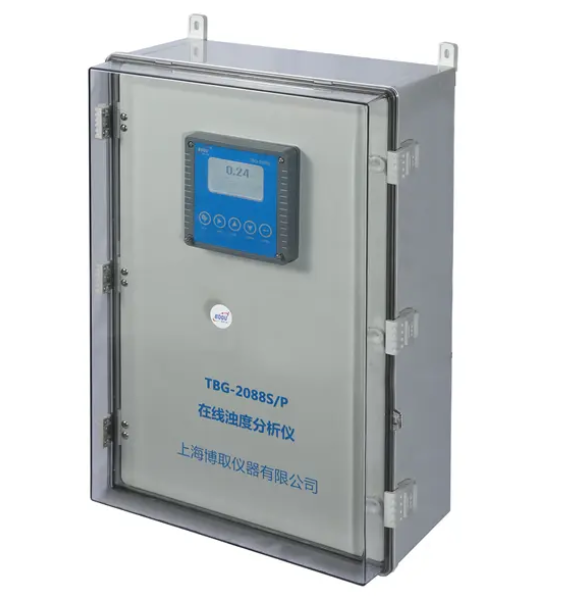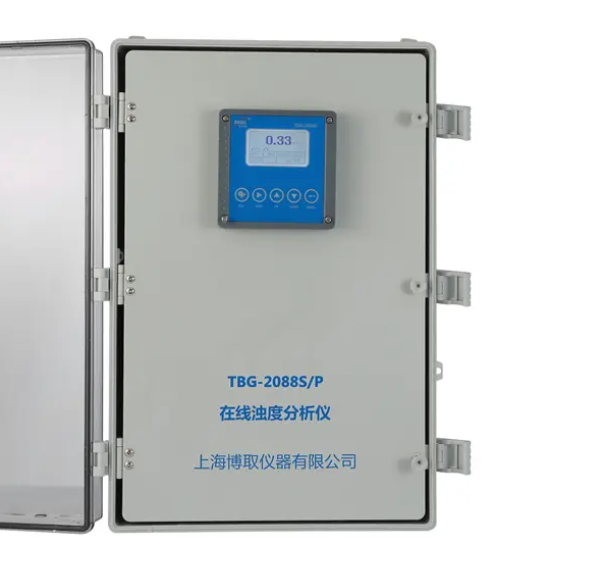What is an in-line turbidity meter? What is the meaning of the in-line?
In the context of an in-line turbidity meter, “in-line” refers to the fact that the instrument is installed directly in the water line, allowing continuous measurement of the turbidity of the water as it flows through the pipeline.
This is in contrast to other methods of measuring turbidity, such as grab sampling or laboratory analysis, which require separate samples to be taken and analyzed outside of the pipeline.
The “in-line” design of the turbidity meter enables real-time monitoring and control of the water quality, which is particularly useful for industrial and municipal water treatment applications.
Turbidity And In-Line Turbidity Meter: Overview And Definition
What is turbidity?
Turbidity is the measure of the number of suspended particles in a liquid. It is an important indicator of water quality and can affect the taste, odor, and appearance of water. High turbidity levels can also indicate the presence of harmful contaminants, such as bacteria or viruses.
What is an in-line turbidity meter?
What is an in-line turbidity meter? An in-line turbidity meter is a device used to measure the turbidity of a liquid in real time as it flows through a pipeline or other conduit. It is commonly used in industrial settings, such as water treatment plants, to monitor water quality and ensure regulatory compliance.
Working Principle of In-Line Turbidity Meter:
In-line turbidity meters work by shining a light through the liquid and measuring the amount of light scattered by the suspended particles. The more particles there are in the liquid, the more scattered light will be detected.
The meter then converts this measurement into a turbidity value, which can be displayed on a digital readout or transmitted to a control system for further analysis.
Advantages Of In-Line Turbidity Meter From BOQU:
Compared to other inspection methods such as grab sampling or laboratory analysis, in-line turbidity meters such as BOQU TBG-2088S/P offer several advantages:
Real-time Measurement:
In-line turbidity meters provide real-time measurement of turbidity, which allows for immediate adjustments and corrections to treatment processes.
Integrated System:
BOQU TBG-2088S/P is an integrated system that can detect turbidity and display it on a touchscreen panel, providing a convenient way to manage and monitor water quality.
Easy Installation and Maintenance:
The digital electrodes of BOQU TBG-2088S/P make it easy to install and maintain. It also features a self-cleaning function that reduces the need for manual maintenance.
Intelligent Pollution Discharge:
BOQU TBG-2088S/P can automatically discharge polluted water, reducing the need for manual maintenance or minimizing the frequency of manual maintenance.
The significance of these advantages is that they improve the efficiency of water treatment processes, reduce the risk of errors in laboratory analysis or grab sampling, and ultimately ensure the quality of water.
With the real-time measurement and easy maintenance of BOQU TBG-2088S/P, it is a reliable and convenient tool for water quality monitoring in various industries.
Why Will You Need The In-Line Turbidity Meter?
There are several reasons why you might need an in-line turbidity meter:
Water Quality Monitoring:
If you are involved in the management of a water treatment plant or any industrial process that uses water, an in-line turbidity meter can help you monitor the quality of the water and ensure it meets regulatory standards.
Process Control:
In-line turbidity meters can be used to control treatment processes automatically based on changes in turbidity. This helps ensure consistency in the process and improves efficiency.
Quality Control:
In-line turbidity meters can be used to monitor the quality of products that require clear liquid, such as beverages or pharmaceuticals. By measuring the turbidity of the liquid, you can ensure the products meet the required specifications.
Environmental Monitoring:
In-line turbidity meters can be used to monitor the turbidity levels of water bodies in environmental monitoring applications. This can help detect changes in water quality that may indicate pollution or other environmental problems.
Overall, an in-line turbidity meter is a valuable tool for any application that requires the measurement of turbidity in real-time. It can help ensure water quality, improve process efficiency, and ensure product quality.
Benefits Of Choosing BOQU As The Supplier Of In-Line Turbidity Meters:
What is an in-line turbidity meter that comes from BOQU? This plug-and-play, intelligent sewage discharge meter is widely used in power plants, fermentation, tap water, and industrial water.
BOQU is from Shanghai, China, with 20 years of experience in R&D and the production of water quality analyzers and sensors. If you want to choose better turbidity meters for your water plant or factory, BOQU is a very reliable partner.
Here are the benefits of choosing it as a partner:
Extensive Experience with Many Famous Brands:
BOQU has established long-term partnerships with many well-known brands, such as BOSCH, demonstrating their rich experience in the industry.
Providing Perfect Solutions to Many Factories:
BOQU has a proven track record of providing perfect solutions to various factories, which can be seen on its official website.
Advanced Factory Production Scale:
BOQU has a modern and advanced factory production scale, with a 3000㎡ plant, an annual production capacity of 100,000 units, and a team of 230 employees.
Choosing BOQU as your supplier ensures that you will receive quality in-line turbidity meters, along with professional and reliable service from a well-established and experienced company.
Post time: Mar-22-2023



